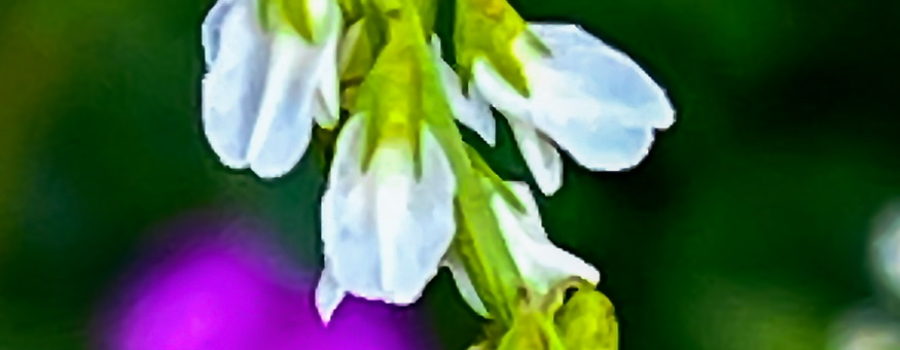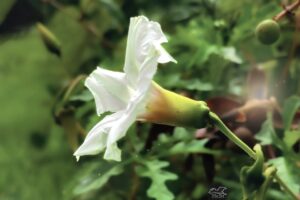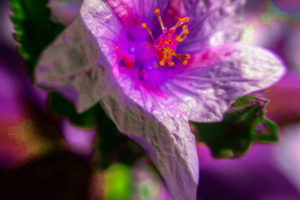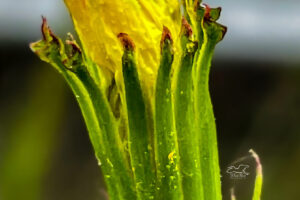White Sweetclover is Beautiful and Useful, but Can be Invasive

This is the prime time of the year for wildflower blooming and the wet spring we are having has resulted in a bumper crop so far. Every year I have to stop several times along my route back and forth to work to photograph wildflowers and sometimes the pollinators that they attract, too. I have already made a couple of stops so far this year, and when I stopped last week I found quite a bit of white sweetclover (Melilotus albus) interspersed in the phlox and early blackjack. We normally see some of it, but I guess it’s enjoying the rains because it’s more abundant than I’ve seen it before. White sweetclover is native to parts of southern Europe and Asia, but was brought to the United States in the early 1600s for use as fodder for cattle and for use as a nectar flower for beekeeping. The nectar contains a high percentage of sugar and the flowers have a sweet fragrance that bees find very attractive. White sweetclover has also been introduced into much of the rest of the subtropical and temperate world including South America, South Africa, Australia, and New Zealand. It is also frequently known as honey clover, white melilot, sweet clover, and Bokhara clover.

White sweetclover is a nitrogen fixing legume from the family Fabaceae which includes plants like kudzu, soybeans, beans, and alfalfa to name just a few. It grows best in full sunlight in well drained sandy or rocky soil. Once established it is very drought tolerant and salt tolerant, but it does not do well if shaded or flooded or in acidic soil. It can be found growing on prairies, plains, in pastures and agricultural fields, roadsides, ditches, right of ways, along river beds, and construction sites. It is very good at coming into disturbed areas and stabilizing the soil and can be used as a ”green manure” to help enrich nitrogen poor fields. Besides being good food for cattle, it will also attract some wild grazing animals like deer, elk, and moose, and the seeds are often eaten by wild birds and wild grazers alike.

People can also eat white sweetclover and it has some medicinal uses, too. When eaten, most people eat the leaves when they are young, before the plant begins to flower. The leaves can be cooked, but are usually eaten raw in salads. It’s supposed to have a strong somewhat bitter taste, so it’s usually used sparsely as a flavor additive. The flowers and leaves can also be dried and brewed into a tea, while the seeds are sometimes ground and used as a spice. Medicinally it is used to treat blood clots and blockages of the lymph system. The leaves can also be applied directly to bruises and hemorrhoids to promote healing. It is sometimes used to treat varicose veins and circulatory problems like leg swelling and leg cramps. There is some indication that it may be useful as a diuretic, but that application has not been well evaluated.

Like many non-native species white sweetclover also has some negative properties and is considered invasive in Wisconsin and Tennessee and a ”weed” in Kentucky and Quebec. It tends to be more problematic in the north than it is down here. It can grow to be 4-8 feet high and in large stands can over shade native species, especially grasses. It also produces prolific numbers of seeds that can be spread by the wind and by the wildlife that ingest them. Additionally, those seeds can remain fertile for up to a decade while waiting for the right conditions for germination. By fixing nitrogen, white sweetclover can alter the soil composition which may also help it to outcompete native plants. If this sounds like a familiar story, that’s because it is. Like so many non-native species, white sweetclover has it’s pluses and minuses. It’s beautiful, edible, has medicinal uses, and attracts pollinators and wildlife, but it can also be bad for the native species by outcompeting them, shading them, and altering the nitrogen levels in the soil. You decide, useful or invasive?






Recent Comments